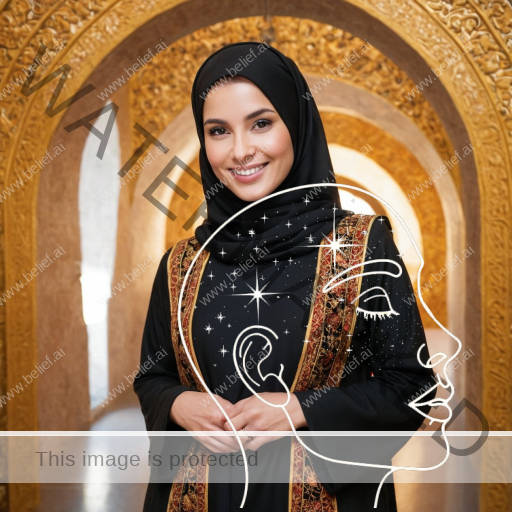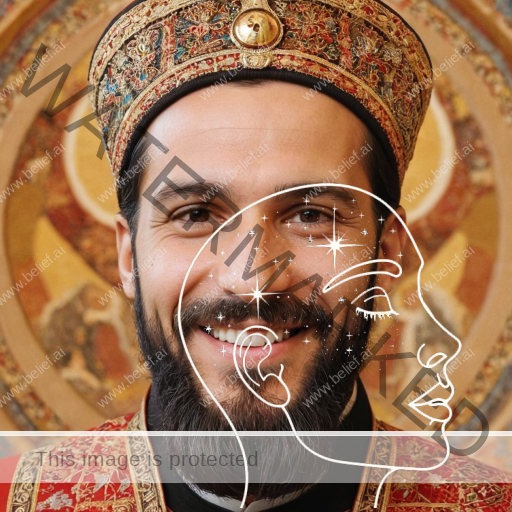Embark with us on a journey through time as we unveil the rich landscape of the Orthodox Church. Get ready to traverse across the globe, delving into the depths of history, exploring the heart of its beliefs, and unearthing the social structures that have shaped civilizations. Our voyage promises to be both enlightening and enthralling, offering glimpses into the sacred texts and ethical beliefs that have guided millions over centuries. We invite you to join us on this magical journey of discovery.
Global Distribution and Demographics
With an estimated 260 million followers worldwide, the Orthodox Church holds a significant place on the global religious stage. Primarily found in Eastern Europe and the Middle East, these churches are a beacon of faith for millions in countries like Russia, Greece, Ukraine, Romania, and many others. The diaspora has further extended the Orthodox presence to major cities around the world, from Sydney to London, New York to Singapore.
The Orthodox Church, often divided into several autocephalous bodies, exhibits a rich diversity in its global distribution. Each local church, while maintaining the Orthodox faith’s core doctrines, reflects its nation’s distinctive cultural and social aspects. This beautiful mosaic of diverse cultures unified by shared faith forms the radiant landscape of the Orthodox Church worldwide.
The Orthodox demographic continues to grow, especially in Africa, where the Church is experiencing a revival. Its tenacious persistence amid the shifting sands of time and changing social landscapes speaks volumes about the robustness of its faith and the resilience of its followers.
Origin, Founders, and Key Figures
The Orthodox Church claims its origins back to the Apostles themselves, as its founders. This apostolic succession has shaped its history, theology, and liturgical practices. The Orthodox Church believes that its faith, as handed down from the Apostles, has remained unaltered through the centuries.
Key figures in the Church’s history include luminaries like St. Basil the Great, St. John Chrysostom, and St. Gregory the Theologian. These Church Fathers played pivotal roles in shaping Orthodox theology and liturgical practices. Their wisdom continues to illuminate the path of the Orthodox faithful.
In more recent times, individuals like Ecumenical Patriarch Bartholomew I, the ‘first among equals’ in the Orthodox Church, have been instrumental in guiding the Church through the challenges of the contemporary world. Their leadership, imbued with the wisdom of the ages yet responsive to modern realities, continues to steer the Orthodox Church on its timeless journey.
Brief History
The history of the Orthodox Church is intertwined with the history of the Eastern Roman Empire, commonly known as the Byzantine Empire. The Church enjoyed the status of the state religion of the empire, leading to a close relationship between Church and state that would last for centuries.
The Great Schism in 1054 split the Christian world into the Western (Roman Catholic) and Eastern (Orthodox) Churches. Despite this division, the Orthodox Church continued to flourish in the Byzantine Empire and later in the national churches of Eastern Europe.

In the 20th century, the Orthodox Church faced immense challenges with the rise of communism in Eastern Europe. Despite periods of persecution and suppression, the Church has emerged resilient and continues to thrive in the modern world, testament to its enduring faith and strength.
Summary of beliefs
The Orthodox Church is centered around the Holy Trinity – the Father, the Son (Jesus Christ), and the Holy Spirit. The Nicene Creed, a statement of faith dating back to the 4th century, is the definitive expression of Orthodox Christian belief.
Orthodoxy places great emphasis on the Sacraments, particularly the Eucharist, also known as the Divine Liturgy. This sacred rite signifies the presence of Christ among the faithful and is the heart of Orthodox worship.
The Orthodox Church also venerates the Virgin Mary and the Saints, seeing them as intercessors between God and man. The Church calendar is filled with feasts and fasts honoring these holy figures, offering the faithful numerous opportunities for reflection and celebration.
Community and Social Structures
The Orthodox Church is organized into a hierarchy, with the Bishop at the top followed by priests and deacons. The Bishop, seen as a successor of the Apostles, holds a central role in the Orthodox community. He oversees the spiritual welfare of his diocese and is the primary celebrant of the Divine Liturgy.
The laity, too, has a vital role in the Orthodox Church, participating actively in the Liturgy and other church activities. The Orthodox community is a vibrant tapestry of individuals of all ages, from young children to the elderly, all coming together in shared faith and fellowship.
The Orthodox Church is also known for its monastic tradition, with monasteries considered the spiritual heart of the Church. Monasticism, a life dedicated to prayer and asceticism, is highly regarded in Orthodoxy, with monks and nuns respected for their commitment to spiritual pursuits.
Sacred Texts and Writings
The Holy Bible, comprising the Old and New Testaments, is the central sacred text of the Orthodox Church. Additionally, the Church gives significant importance to the Church Fathers’ writings, the decisions of the Ecumenical Councils, the Lives of the Saints, and the Philokalia, a collection of texts written by spiritual masters.
The Divine Liturgy, a sacred rite that includes the Eucharist, is another crucial text in Orthodoxy. Its beautiful hymnography and rich symbolism serve as a spiritual guide for the faithful, leading them into a deeper encounter with God.
The Orthodox Church also holds dear the tradition of iconography. Icons, sacred images depicting Christ, the Virgin Mary, and the Saints, are not just works of art but spiritual windows, guiding the faithful towards a mystical experience of the divine.
Ethical Beliefs and Moral Codes
The Orthodox Church lays great emphasis on the ethical and moral life of its followers. Its ethical teachings are rooted in the Bible, the teachings of the Church Fathers, and the decisions of the Ecumenical Councils. They revolve around love, humility, and mercy.
The Orthodox Church encourages its followers to live a life of holiness, characterized by love for God and neighbor. This ethic of love is manifested in acts of charity, forgiveness, and reconciliation, and in the care for the poor and needy.
The Orthodox Church also upholds the sanctity of life, marriage, and family. It teaches its followers to respect all life forms, to honor the marriage bond, and to nurture family relationships, seeing these as reflections of God’s love for humanity.
Cultural and Social Impact
The Orthodox Church has left an indelible mark on the cultures and societies where it is present. Its rich liturgical traditions, music, and iconography have significantly influenced the arts in countries like Russia, Greece, and Serbia.

Orthodox monasticism has also had a profound impact on society. Monasteries have often served as centers of learning, preserving ancient texts and promoting education. They have also been places of refuge and support for the needy, exemplifying the Church’s ethic of love and mercy.
Moreover, the Orthodox Church has played a critical role in shaping national identities, particularly in Eastern Europe. Its resistance against oppressive regimes and its efforts in preserving national traditions have granted the Church a special place in the hearts of the people.
Contemporary Issues and Challenges
In the contemporary world, the Orthodox Church faces numerous challenges. These include the pressures of secularism, the rise of religious indifference, and the complexities brought about by globalization. The Church is called to respond to these challenges while remaining true to its timeless faith and traditions.
Another major challenge is the issue of Orthodox unity. With the Orthodox Church divided into several autocephalous bodies, questions of jurisdiction and authority often arise. Efforts are being made, like the Holy and Great Council of Crete in 2016, to address these issues and strengthen Orthodox unity.
Despite these challenges, the Orthodox Church looks towards the future with hope and faith. It continues to witness to the Gospel in a changing world, guided by the light of its ancient faith and the strength of its resilient community.
So there you have it – our journey through the rich landscape of the Orthodox Church. It’s been an enlightening voyage, from its origins in the apostolic age to its vibrant presence in today’s world. The Orthodox Church, with its timeless faith, resilient community, and inspiring wisdom, continues to be a beacon of light in a changing world. As we step off this historic journey, we carry with us a deeper understanding and appreciation of the Orthodox Church and its timeless wisdom.
Additional Resources
To deepen your understanding of the Orthodox Church’s beliefs, history, and culture, a variety of resources can be invaluable. Here are some recommendations across different mediums that offer a comprehensive look into Orthodox Christianity:
Books
1. “The Orthodox Church” by Timothy Ware (Bishop Kallistos of Diokleia)
– A classic introduction to Orthodox Christianity, this book covers its history, theological beliefs, and practices. It’s written in an accessible manner, making it suitable for both beginners and those looking to deepen their understanding.
2. “The Orthodox Way” by Bishop Kallistos Ware
– This companion volume to “The Orthodox Church” delves into the spiritual life and theology of the Orthodox Church. It explores key concepts such as the Trinity, prayer, and the sacraments.
3. “Orthodox Christianity: Volume I – The History and Canonical Structure of the Orthodox Church” by Metropolitan Hilarion Alfeyev
– For those interested in a more detailed account of the Orthodox Church’s history and its canonical structure, this volume by Metropolitan Hilarion is an excellent choice. It’s part of a comprehensive series on Orthodox Christianity.
Websites
4. Ancient Faith Ministries ([ancientfaith.com](http://ancientfaith.com/))
– Offers a wealth of resources including podcasts, blogs, and books on Orthodox faith and life. It’s a great starting point for anyone looking to explore various topics related to Orthodoxy.
5. OrthodoxWiki ([orthodoxwiki.org](http://orthodoxwiki.org/))
– A free-content encyclopedia of the Orthodox Church that anyone can edit. It contains articles on Orthodox Christian beliefs, practices, and culture, as well as biographies of significant figures in Orthodoxy.
Online Courses and Lectures
6. “The Orthodox Christian Studies Center of Fordham University”
– Offers online courses and a series of public lectures on Orthodox Christian studies. These are designed to promote understanding of the Orthodox tradition from a scholarly perspective.
YouTube Channels
7. “Theoria”
– Provides a collection of informative videos on Orthodox theology, worship, and lifestyle. It features talks and sermons by clergy and theologians.
Podcasts
8. “Orthodoxy and Heterodoxy”
– Available on Ancient Faith Radio, this podcast explores Orthodox belief in the context of other Christian denominations and religions, providing a clear understanding of Orthodox Christianity’s unique position.
9. “Speaking the Truth in Love” by Fr. Thomas Hopko
– A series of reflections on the doctrines and practices of the Orthodox Church, as well as its approach to contemporary issues, by the late Fr. Thomas Hopko, a respected Orthodox theologian.
These resources should provide a solid foundation for anyone interested in exploring the depth and breadth of the Orthodox Christian faith. Whether you’re looking for an introduction to its teachings, an in-depth examination of its history, or an exploration of its cultural practices, there’s something here for everyone.
